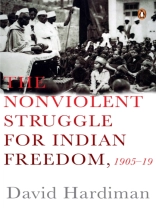In recent years, there has been a surge of writing on the technique and practice of non-violent forms of resistance. Much of this has focused on movements that occurred after the end of the Second World War, many of which have been extremely successful. Although the fact that such a method of resistance was developed in its modern form by India is acknowledged, there has not until now been an authoritative history available to show exactly how this occurred. This book provides such a study. Although non-violence is associated above all with the towering figure of M.K. Gandhi, David Hardiman shows that civil forms of resistance were already being practiced by nationalists in British-ruled India under the rubric of ‘passive resistance’. In this, there was no principled commitment to non-violence as such. It was Gandhi, first in South Africa and then in India, who both evolved a technique that he called ‘satyagraha’ that he characterised in terms of its ‘non-violence’. In this, ‘non-violence’ was forged as both a new word in the English language, and as a new political concept. The Non-violent Struggle for Freedom brings out in graphic detail exactly what this entailed, and the formidable difficulties that the pioneers of such resistance encountered in the years 1905-19.
David Hardiman
Non Violent Struggle for Freedom 1905-1919 [EPUB ebook]
Non Violent Struggle for Freedom 1905-1919 [EPUB ebook]
यह ईबुक खरीदें और 1 और मुफ़्त पाएं!
भाषा अंग्रेज़ी ● स्वरूप EPUB ● पेज 272 ● ISBN 9789353052621 ● प्रकाशक Penguin Random House India Private Limited ● प्रकाशित 2018 ● डाउनलोड करने योग्य 3 बार ● मुद्रा EUR ● आईडी 8653812 ● कॉपी सुरक्षा Adobe DRM
एक DRM सक्षम ईबुक रीडर की आवश्यकता है












